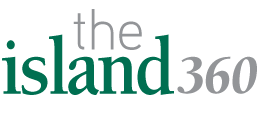
The 123rd Annual Christmas Bird Count is almost over.
The count period runs each year from Dec. 14 through Jan. 5. Those dates are set by the earliest and latest historic counts on record.
The count started in 1899 as a countermeasure to Christmas hunts and is now the oldest running citizen science project in the Americas.
The count has expanded to sites in Canada, the Caribbean and Latin America. The data provided by the count is invaluable to scientists, giving an annual snapshot of bird movement and numbers.
Our region hosts 53 of the over 2600 count circles, from Central Park, one of the original sites, celebrating 123 years of volunteering for science, to Montauk holding their 93rd count.
There is a long tradition of counts in this region with Quogue – Water Mill marking their 74th, Northern Nassau 70th, and 60th for Captree.
With the technical advances like eBird, reporting has become electronic rather than hash marks on a paper sheet. COVID meant most counts didn’t have in-person compilations the last few years, but they carried on via Zoom.
Counts are still subject to uncontrollable elements, mainly the weather. Those with early counts this year had mild weather and open ponds and streams. Those who braved last week’s Arctic weather went out into freezing temperatures and frozen water.
Some hardy souls even participate in several counts over the 3-week period. Counting can be addictive. One participant in the Northern Nassau count celebrated his 50th bird count, having started as a student in 1972.
Because we are an island, counts of over 100 species are typical for this area as many sea ducks, shorebirds and pelagic (ocean-going) species are expected. Counts in the south and Latin America can break 150 or 200 species spotted with over wintering migrants and tropical residents driving up numbers.
Last year’s count located nearly 43 million individual birds of 2554 species. This sounds like a lot but compared with counts of 30 years ago, numbers are down. In past decades far more total birds were tallied, averaging 60 to 100 million.
This decline in birds occurred when there are more counts and more participants with effort and geographic coverage nearly doubled. The recent paper that estimated a three billion bird decline in North American breeding birds used CBC data and other sources, like Breeding Bird Atlas’ to come to this conclusion.
These are not birds that have gone to other places, they are gone forever.
A trend in our area is low numbers of sea ducks.
In the recent past, huge rafts of 20,000 greater scaup could be found off Stelhi Beach in Bayville, but they have been missing for several years now. Some of those birds have relocated due to available food resources, some are permanent losses.
The Northern Nassau Count Circle encompasses Manhasset Bay, Hempstead Harbor and Oyster Bay and south to the Northern State. On December 17th, the 67 counters found it quiet but still managed to find 107 species. Of those, 28 were saves, birds found in only one of the 15 sectors within the count circle.
There were a high number of rarities located, some firsts for the count, marked *. Some were true rarities for the region; Red Phalarope*, Pink Footed Goose*, Red-Necked Grebe, Eurasian Wigeon, Red Crossbill*, and Yellow-breasted Chat *.
Others were late staying summer regulars like House Wren, Great Egret, Black-crowned Night Heron, and Baltimore Oriole. Another group classes as seen in the region but generally not found on the north shore like Lesser Black- backed Gull, Black Vulture*, and Boat-tailed Grackle*. One is probably not super rare, just secretive, Northern Saw Whet Owl.
Misses included 14 species that have been located on five to 10 of counts in the last 10 years including Horned Grebe for the first time ever.
Changes in count numbers and species from year to year is expected as weather and food availability drives whether birds linger in our area over winter.
However, the overall trend of bird decline is still worrying. The leading causes of bird mortality are habitat loss due to climate change or human alteration (generally agricultural), building collisions, 30% of which occur on low-rise buildings, and outdoor cat predation.
We can do things to mitigate these trends. There are lots of climate change personal habits that are easy to break. Planting native species that offer fruit, seed, and insect habitat creates food, shelter, and nesting places.
And keeping cats indoors is good for birds, small mammals, the native animals that also need them for food, and for the cats who are then no longer subject to fights, disease, and predators.
Next year’s Northern Nassau Count will be Dec. 16th – everyone can help, feeder counters are welcome.






